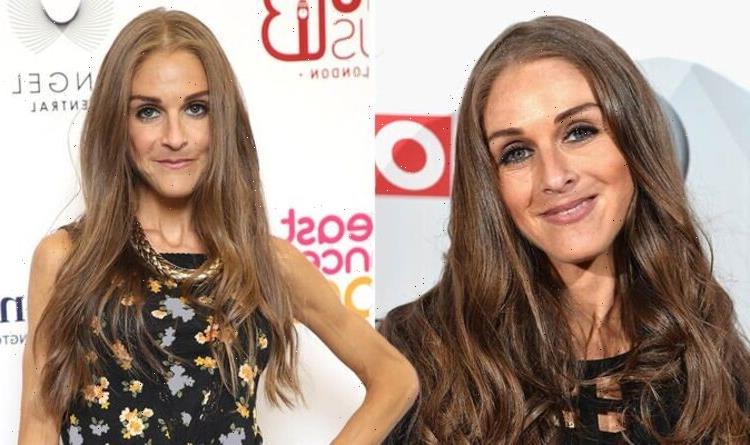Nikki Grahame: Big Brother star dies aged 38
We use your sign-up to provide content in ways you’ve consented to and to improve our understanding of you. This may include adverts from us and 3rd parties based on our understanding. You can unsubscribe at any time. More info
Nikki shot to fame after appearing on the seventh series of Big Brother, in which she finished fifth place. Her appearance on the show launched her career, but her battle with anorexia had started when she was a child. First diagnosed with the eating disorder aged eight, Sue explained that at the time it was “unheard of” for children to struggle with eating, so it was incredibly difficult for people to understand what Nikki was going through.
The NHS explains that anorexia is a serious mental health condition and eating disorder where people try to keep their weight as low as possible by not eating enough food or exercising too much.
Most often, individuals have a distorted image of their bodies and feel as though they are fat, even if they are underweight. This can lead to dangerous behaviour like individuals starving themselves.
“I first noticed when she was eight that she was terribly sad but I didn’t understand it,” Sue explained when talking about the start of Nikki’s anorexia.
“She got smaller and the school said she couldn’t concentrate in class and that’s where it began. I knew where it began but, at that time, it was unheard of that kids didn’t eat 39 years ago.

“For a lot of girls more awareness could have helped, but I feel that this was Nikki’s path. It was hard to get people to see what was going on.”
Due to the toll the disorder took on Nikki as a child, she spent 11 years in an eating disorder unit, a difficult time for her whole family.
Sue went on to say: “This horrible illness was a nightmare. It was really really tough, I had her older sister at home and it was hard on her. It left its mark and it changed the relationship between me and Natalie.”
As well as limiting how much they eat, individuals may develop “rules” around what they feel they can and cannot eat as well as make themselves sick, or misuse laxatives to get rid of food eaten. Some people with anorexia may experience cycles of bingeing (eating large amounts of food at once) and then purging.
Beat Eating Disorders, a UK-based charity explains that anorexia can cause serious physical problems including a loss of muscle strength, reduced bone strength and a decrease in sex drive. In severe cases, patients can experience heart problems and organ damage.
Due to the serious nature of the condition, it is important for individuals to recognise the signs of the disorder in order to get themselves, or others, help and treatment. Signs of the condition can either be behavioural, psychological or physical.
Behavioural changes are often the first signs of anorexia, and become noticeable before changes to physical appearance. These changes can include the following:
- Not being truthful about how much weight they have lost
- Strict dieting and avoiding food they think is fattening
- Counting the calories in food excessively
- Missing meals (fasting)
- Avoiding eating with other people
- Hiding food
- Cutting food into tiny pieces to make it less obvious they have eaten little or to make food easier to swallow
- Eating very slowly
- Irritability.
Due to the effects of starvation, individuals with anorexia may experience physical symptoms such as difficulty sleeping, feeling dizzy, stomach pains, bloating, hair loss and swelling in the feet, hands or face – known as oedema.

At the height of her illness, Nikki had a BMI (body mass index) of 10, and spent two weeks in hospital before returning home and passing away shortly afterwards.
Speaking on BBC Breakfast, Sue explained: “She was blue-lighted to the local hospital in Dorset and she was there for two weeks.
“She had a BMI of 10, she was pitiful, and I went there every day to shower her, to dress her, to sit with her while she ate, to take the load off the nurses, it wasn’t a specialised unit.
“Nikki managed to convince them ‘I’ll be fine when I go home’. They’d already said we can’t have you, you can’t make stairs, so they let her home and she died that night.”
If not treated, anorexia can be fatal, but many of the physical effects of anorexia are reversible, with a full recovery from the condition possible. One of the main treatments used to help individuals with anorexia is talking therapies.

The aim of these therapies are to reduce risks to physical and psychological wellbeing. They do this by encouraging healthy eating, and aiding recovery by helping individuals to develop healthy ways of coping with the thoughts and feelings behind their eating disorder.
Therapies that might form part of the treatment for anorexia include:
- Cognitive behavioural therapy (CBT)
- Cognitive analytic therapy (CAT)
- Interpersonal psychotherapy (IPT)
- Focal psychodynamic therapy (FPT)
- Family interventions focused on eating disorders.
CBT in particular is based on the concept that your thoughts, feelings, physical sensations and actions are interconnected, and that negative thoughts and feelings can trap you in a vicious cycle. By showing individuals that changing negative thoughts can help to improve the way they feel, individuals may be able to overcome their disorder.
If CBT is recommended for the individual they will usually have a session with a therapist once a week or once every two weeks. The course of treatment usually lasts for between five and 20 sessions, with each session lasting 30 to 60 minutes.
For help and support, Beat’s free, confidential helplines are open 365 days a year, 9am-8pm Monday to Friday, and 4-8pm weekends and bank holidays. Contact the adult helpline on: 0808 801 0677, [email protected]. And the youth line on: 0808 801 0711, [email protected].
Source: Read Full Article
